Il programma di oggi riservava alcune interessanti discussioni.
L'organizzazione è funzionale. Ogni relatore ha un' ora a disposizione e circa 10 slide; e tutte cominciano alle X o'clock precise (per cui ci si può organizzare bene la puntatina); tra una relazione el'altra ci sono circa cinque minuti di pausa..per rilassarsi un po'.
Alla fine di tutto
sfilata d'alta moda e musica.
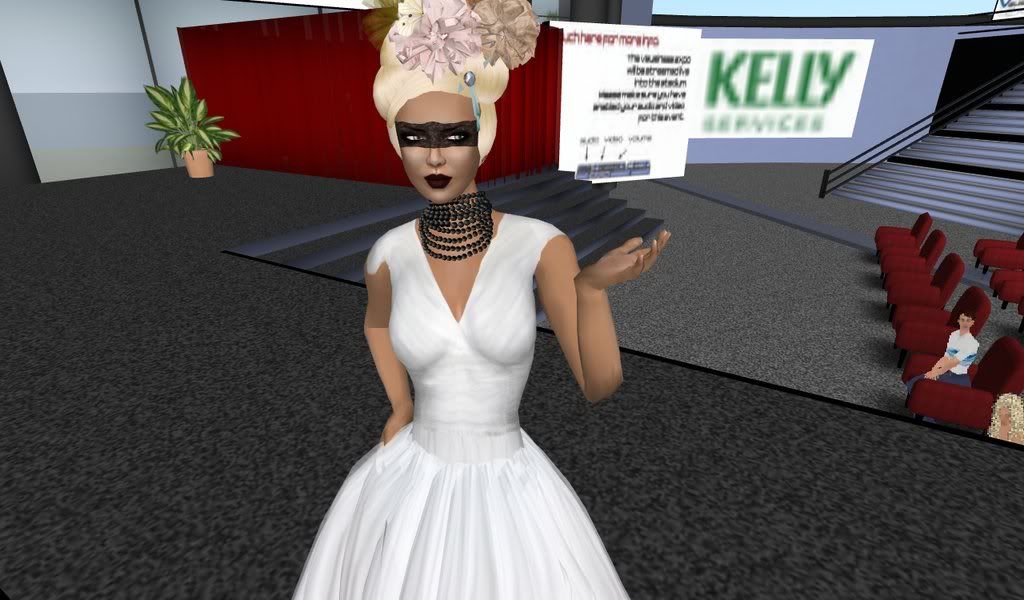 Le slide
Le slide (tranne in un caso per lag lato client) hanno funzionato benino, i tempi erano abbastanza rilassanti e ,dopo circa mezz'ora di presentazione, c'era un' altra mezza ora di domande e risposte.

Interessanti gli interventi di
IBM, dell, Consorzio Virtual Word e quello sul lavoro collaborativo o sul learning and training.
Mi manderanno un
file audio(in inglese) (fortuna che mi ero registrata il 24)perchè il mio inglese non mi permetteva di seguire decentemente le discussioni senza slide (una o due).
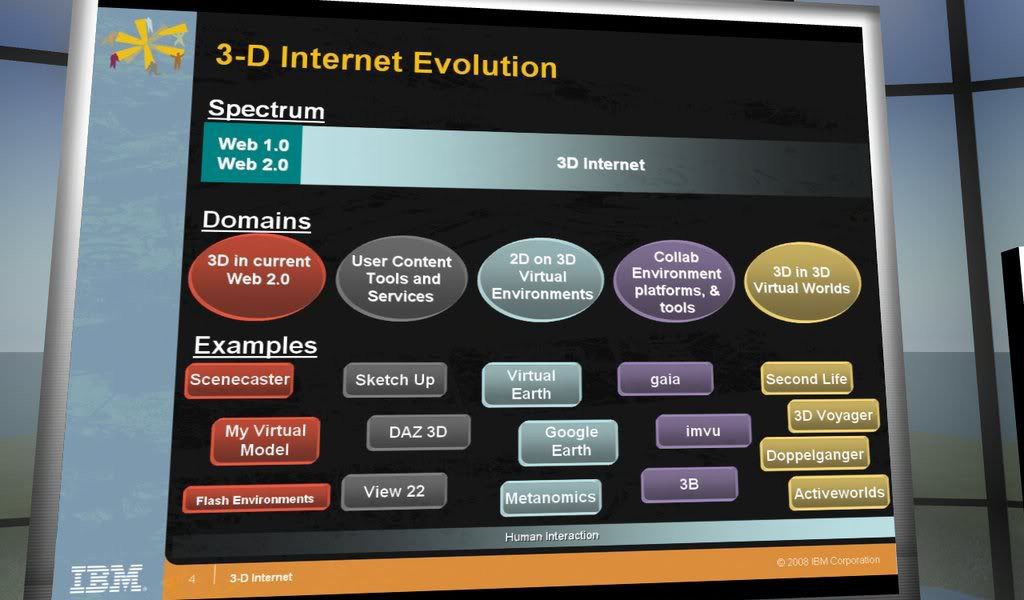
Ho fatto molte foto, mentre ascoltavo e guardavo slide, sia alle
slide sia ai personaggi ed alla fine alla sfilata. Niente video..sto passando a WEgame e non sempre va.
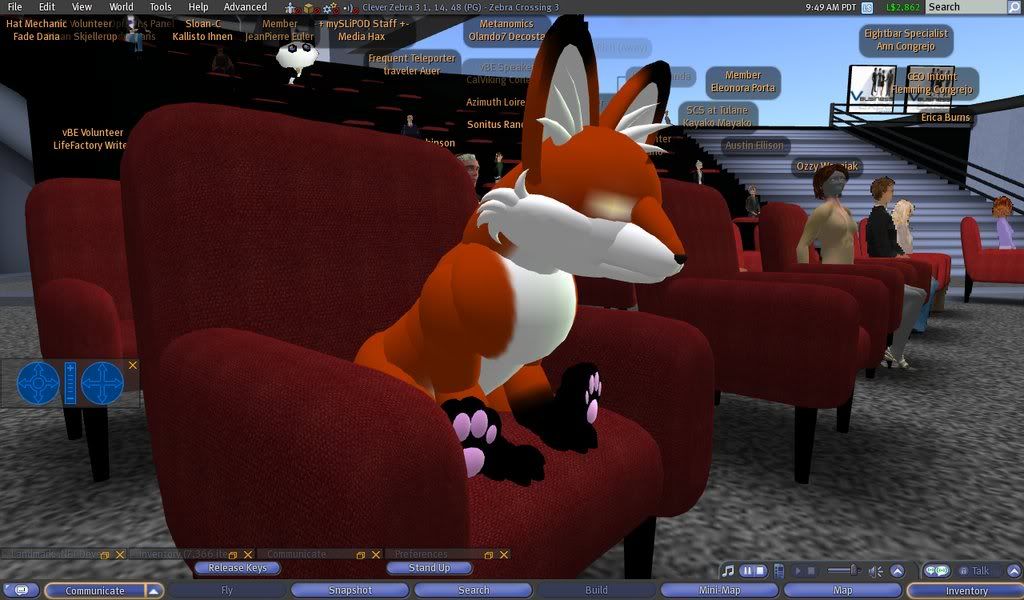
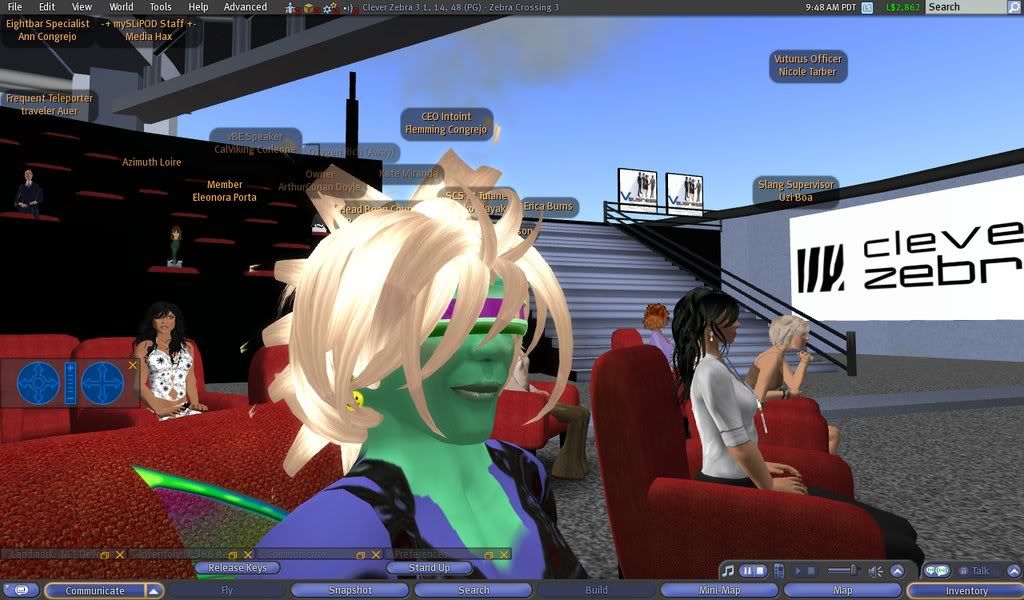
Qualcosa si può capire dalle slide anche per chi non era presente, ma confido molto negli articoli che seguirannno sul sito della clever zebra.
ecco il
feedhttp://feeds.cleverzebra.com/cleverzebra?format=xmlCome
braistorming è stato utile.
Le sto caricando, si potranno vedere su flickr o su picasa.
Molti vogliono
aumentare i propri impiegati dedicati a SL, ma tutto sommato il numero dei presenti al meeting non era elevato (100 , contemporaneamente forse meno? in totale 200; 300? magari non erano gli stessi per ogni relazione) ed erano felici di aver trovato
35 speaker di qualità.
Insomma non era solo fumo o specchietti per allodole, ci sono stati contenuti , trand, considerazioni sui VW del futuro e sull'interoperabilità tra i futuri mondi virtuali; un pararllelo tra lavoro offline ed online a confronto; un futuristico scenario di lavoro collaborativo per
aziende petrolifere (!?!?) centrato sul rilevamento tridimensionale del terreno e su tutta una serie di collegamneti di comunicazione (si può vedere in slide)
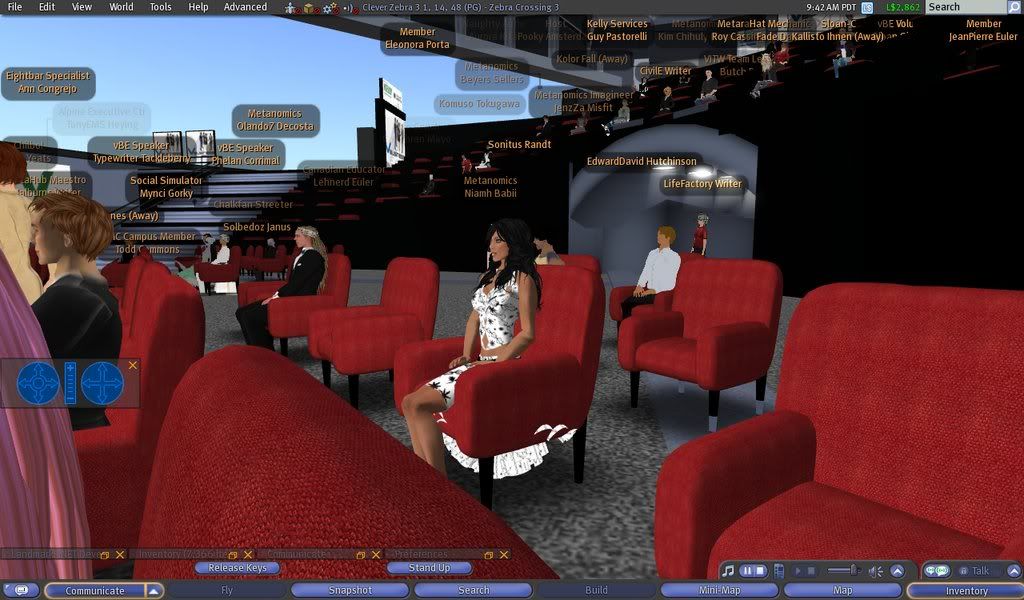
Quando gli album saranno pronti li metterò sul blog per condividere parzialmente l'esperienza.
Certo avrei preferito partecipare ad un convegno tecnico -scientifico sui VW ma prima o poi ci sarà anche quello su SL.
Bye
ah qualche link utile sul blog (così li metto una volta sola)
http://feeds.cleverzebra.com/cleverzebra?format=xmlhttp://www.srlc-bi.com/http://flexknowlogy.learningfield.org/2008/04/09/defining-creepy-tree-house/http://cleverzebra.com/products/secondlife/solutions/corporatehttp://cleverzebra.com/node/79http://cleverzebra.com/node/78http://cleverzebra.com/firsthttp://en.wikipedia.org/wiki/Paulo_Freirehttp://en.wikipedia.org/wiki/Pedagogy_of_the_Oppressed*************************************************************************************
Understanding Social Media's Place In BusinessSubmitted by Caleb Booker on Mon, 04/14/2008 - 19:46
Bryan Carter, who works in
Corporate Communications for Avnet, Inc. will be at the vBusiness Expo on the
April 27th to tell us about the company's experiences
using social media. This involved the
construction of a real life museum in Phoenix, AZ that was mirrored in Second Life, and complimented with a variety of
Web 2.0 tools like Flickr and Digg.
Since the museum was built Bryan has been carefully gathering metrics on what works and what doesn't, which has yielded insights available almost nowhere else. "Our Second Life efforts have really been the cornerstone of
our self-education efforts in learning about Social Media and Web 2.0 technologies, and the information gained has been priceless to the business."
The end result is a benefit both to the internal workings of the company and developing external relationships. Come and discover what was learned from the experience and gain your own understanding of
how to guide projects in virtual worlds
************************************************************************************
This article is an attempt to objectively define the
phrase “creepy treehouse” as coined by Chris Lott, and in current usage by ed tech folks such as Scott Leslie, Marc Hugentobler, John Krutsch, and others. I plan to follow up with a post on my perspective on CTH in the field of
educational technology.
 creepy treehouse
creepy treehouse
see also creepy treehouse effect
n. A
place, physical or virtual (e.g. online), built by adults with the intention of luring in kids.
Example: “Kids … can see a [creepy treehouse] a mile away and generally do a good job in
avoiding them.” John Krutsch in Are You Building a Creepy Treehouse?”
n. Any institutionally-created, operated, or
controlled environment in which participants are lured in either by mimicking pre-existing open or naturally formed environments, or by force, through a system of punishments or rewards.
Such institutional environments are often seen as
more artificial in their construction and usage, and typically compete with pre-existing systems, environments, or applications. creepy treehouses also have an aspect of closed-ness, where
activity within is hidden from the outside world, and may
not be easily transferred from the environment by the participants.
n. Any system or environment that repulses a target user due to it’s closeness to or representation of an
oppressive or overbearing institution.
n. A situation in which
an authority figure or an institutional power forces those below him/her into social or quasi-social situations.
With respect to education, Utah Valley University student Tyrel Kelsey describes, “creepy treehouse is
what a professor can create by requiring his students to interact with him on a medium other than the class room tools. [E.g.] requiring students to follow him/her on peer networking sites such as Twitter or Facebook.”
adj. Repulsiveness arising from institutional mimicry or
emulation of pre-existing community-
driven environments or systems.
Example: “
Blackboard Sync is soooo creepy treehouse.” Marc Hugentobler
In the field of educational technology a creepy treehouse is
an institutionally controlled technology/tool that emulates or mimics pre-existing technologies or tools that may already be in use by the learners, or by learners’ peer groups. Though such systems may be seen as innovative or problem-solving to the institution, they may repulse some users who see them as infringement on the sanctity of their peer groups, or as having the potential for institutional violations of their privacy, liberty, ownership, or creativity. Some users may simply object to the influence of the institution.
I’ve been observing this phenomena increasingly, as instructors push down hot Web 2.0 technologies,
while students push back with vocal objections or passive resistance. I call this the creepy treehouse effect.
More directly, any move to integrate or aggregate new institutional tools or systems with pre-existing tools or systems already embraced by the community may be seen as creepy treehouse, in as much as it may be construed as institutional infringement upon the social or professional community of it’s participants.
For example, the Blackboard family of
learning management system products are often seen as creepy treehouses, as they provide e-learning tools in a very rigid, closed environment that is institutionally controlled in an attempt to “engage” students through technological novelty or mimicry of existing Web-based tools for social engagement. Increasingly, learning management systems are incorporating what educators assess as being potentially valuable learning tools such as blogs, wikis, social bookmarking, instant messaging, etc., not recognizing that
these tools may be seen as artificial, meaningless, tiresome, temporary, or simply another aspect of The Man by the institution’s target participant group:
the students.At the same time, other LMS tools that are more exclusively
related to the traditional activity of teaching (e.g. gradebooks, online quizzing, material posting, etc) are not viewed as inherently creepy treehouse. Tyrel Kelsey suggests:
Students reject creepy treehouses for one reason:
they are creepy. I think a better approach to education is the idea of a
Personal Learning Environment (PLE) …
which [students] can invite the professor into when they feel comfortable doing so.
In Students should build
their own tree house
Creepy treehouses are not limited to the realm of education or educational technology. In the
computer software environment, for instance,
Microsoft Office Live is likely to be judged as creepy treehouse relative to
Google Docs & Spreadsheets and Zoho, not due entirely to its competitiveness or the relative similarities of the products, but more to the
origination of the software: Microsoft is often seen as a controlling, soulless, self-centered institution, whereas Zoho and Google are seen as not only preceding Microsoft Live, but also
open, user-centered, community-driven, or alternative.
Opinions in the community as to the creepy treehouse-ness of a given system or environment may vary greatly due to the subjectiveness of individual experiences. I expect that newly introduced tools, systems, or environments are more likely to be suspect and labeled “creepy treehouse”, though over time such systems may prove to have more salient long-term value to the community than anticipated.
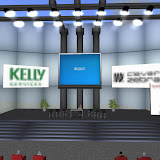

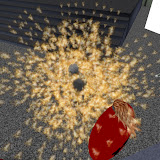



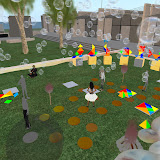
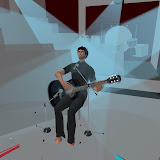

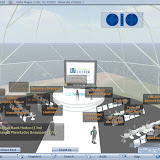
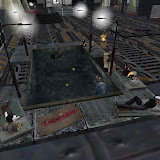
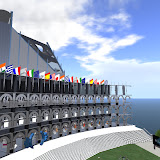


























 Flickr/eleonoraporta
Flickr/eleonoraporta Myspace/eleonora_porta
Myspace/eleonora_porta Twitter/eleonoraporta
Twitter/eleonoraporta YouTube/username
YouTube/username Del.icio.us/eleonora.porta
Del.icio.us/eleonora.porta Wikipedia/eleonoraporta
Wikipedia/eleonoraporta GMail/Eleonora Porta
GMail/Eleonora Porta Technorati/eleonoraporta
Technorati/eleonoraporta Blog/Eleonora Porta
Blog/Eleonora Porta


